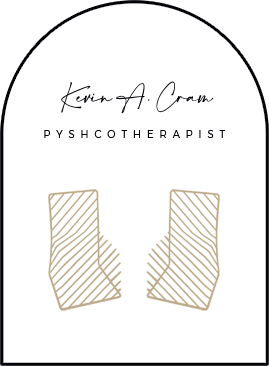[spb_accordion widget_title=”Object Relations Treatment Plan #1″ width=”1/1″ el_position=”first last”] [spb_accordion_tab title=”Early Phase” accordion_id=”” icon=””] [spb_text_block pb_margin_bottom=”no” pb_border_bottom=”no” width=”1/1″ el_position=”first last”]
[table type=”standard_minimal”]
[trow]
[thcol]Goals[/thcol]
[thcol]Interventions[/thcol]
[/trow]
[trow]
[tcol]Provide a safe holding environment[/tcol]
[tcol]Establish and model boundaries[/tcol]
[/trow]
[trow]
[tcol]Establish a therapeutic alliance[/tcol]
[tcol]Use empathic/attentive listening/statements[/tcol]
[/trow]
[trow]
[tcol]Establish boundaries[/tcol]
[tcol]Listen with “evenly suspended” attention[/tcol]
[/trow]
[trow]
[tcol]Explore presenting problem to establish client goals[/tcol]
[tcol]Take a psychosocial history[/tcol]
[/trow]
[trow]
[tcol]Symptom identification and reduction[/tcol]
[tcol]Assessment[/tcol]
[/trow]
[trow]
[tcol]Identify early conflicts that are recapitulated in the current family situation[/tcol]
[tcol]Clarify and amplify issues[/tcol]
[/trow]
[trow]
[tcol][/tcol]
[tcol]Begin to put language to feelings[/tcol]
[/trow]
[trow]
[tcol][/tcol]
[tcol]Provide psychoeducation and normalization to promote symptom reduction[/tcol]
[/trow]
[trow]
[tcol][/tcol]
[tcol]Use of referrals to reduce symptoms[/tcol]
[/trow]
[trow]
[tcol][/tcol]
[tcol]Reframe role of identified patient[/tcol]
[/trow]
[/table]
[/spb_text_block] [/spb_accordion_tab] [spb_accordion_tab title=”Middle Phase” accordion_id=”” icon=””] [spb_text_block pb_margin_bottom=”no” pb_border_bottom=”no” width=”1/1″ el_position=”first last”]
[table type=”standard_minimal”]
[trow]
[thcol]GOALS[/thcol]
[thcol]INTERVENTIONS[/thcol]
[/trow]
[trow]
[tcol]Promote insight (e.g. into split-off or disowned parts of self)[/tcol]
[tcol]Clarification and amplification[/tcol]
[/trow]
[trow]
[tcol]Uncover unconscious wishes and desires[/tcol]
[tcol]Interpretations (e.g. linking past to the present, reframing)[/tcol]
[/trow]
[trow]
[tcol]Discover resistance / defense mechanisms[/tcol]
[tcol]Identify and educate about defences[/tcol]
[/trow]
[trow]
[tcol]Develop ability to distinguish past relational dynamics from present relational dynamics[/tcol]
[tcol]Explore intention of resistance / defences[/tcol]
[/trow]
[trow]
[tcol]Increase individuation and separation (reduction of pathological attachments)[/tcol]
[tcol]Interrupt and explore the projection process and acting out behaviors[/tcol]
[/trow]
[trow]
[tcol]Promote reintegration of split-off parts of self[/tcol]
[tcol]Identify and increase tolerance for split-off parts and feelings[/tcol]
[/trow]
[trow]
[tcol]Promote development of a cohesive, true self[/tcol]
[tcol]Continue psychoeducation when relevant[/tcol]
[/trow]
[trow]
[tcol]Reparent[/tcol]
[tcol]Provide corrective emotional experience[/tcol]
[/trow]
[trow]
[tcol][/tcol]
[tcol]Use of objective countertransference[/tcol]
[/trow]
[trow]
[tcol][/tcol]
[tcol]Interpret and explore transference[/tcol]
[/trow]
[/table]
[/spb_text_block] [/spb_accordion_tab] [spb_accordion_tab title=”Late Phase” accordion_id=”” icon=””] [spb_text_block pb_margin_bottom=”no” pb_border_bottom=”no” width=”1/1″ el_position=”first last”]
[table type=”standard_minimal”]
[trow]
[thcol]GOALS[/thcol]
[thcol]INTERVENTIONS[/thcol]
[/trow]
[trow]
[tcol]Resolve idealized transference[/tcol]
[tcol]Review and consolidate self-soothing and other coping mechanisms[/tcol]
[/trow]
[trow]
[tcol]Work through termination issues:[/tcol]
[tcol]Interpret and work through abandonment / loss issues[/tcol]
[/trow]
[trow]
[tcol]- loss of therapy[/tcol]
[tcol]Interpret and work through regression[/tcol]
[/trow]
[trow]
[tcol]- loss of therapist and therapeutic relationship[/tcol]
[tcol]Provide corrective emotional experiences[/tcol]
[/trow]
[trow]
[tcol]- attending to regression[/tcol]
[tcol][/tcol]
[/trow]
[trow]
[tcol]- reparenting[/tcol]
[tcol][/tcol]
[/trow]
[/table]
[/spb_text_block] [/spb_accordion_tab] [/spb_accordion] [spb_accordion widget_title=”Object Relations Treatment Plan #2″ width=”1/1″ el_position=”first last”] [spb_accordion_tab title=”Early Phase” accordion_id=”” icon=””] [spb_text_block pb_margin_bottom=”no” pb_border_bottom=”no” width=”1/1″ el_position=”first last”]
[table type=”standard_minimal”]
[trow]
[thcol]GOALS[/thcol]
[thcol]INTERVENTIONS[/thcol]
[/trow]
[trow]
[tcol]Establish a holding environment[/tcol]
[tcol]Making empathic statements[/tcol]
[/trow]
[trow]
[tcol][/tcol]
[tcol]Utilizing active listening[/tcol]
[/trow]
[trow]
[tcol][/tcol]
[tcol]Giving uninterrupted attention[/tcol]
[/trow]
[trow]
[tcol][/tcol]
[tcol]Modulating feelings[/tcol]
[/trow]
[trow]
[tcol][/tcol]
[tcol]Showing interest in responses[/tcol]
[/trow]
[trow]
[tcol][/tcol]
[tcol]Structuring sessions[/tcol]
[/trow]
[trow]
[tcol][/tcol]
[tcol]Setting limits[/tcol]
[/trow]
[trow]
[tcol]Improving communication[/tcol]
[tcol]Confronting and intervening[/tcol]
[/trow]
[trow]
[tcol][/tcol]
[tcol]Modeling how to speak from “I” position[/tcol]
[/trow]
[trow]
[tcol][/tcol]
[tcol]Pointing out that blaming is projecting[/tcol]
[/trow]
[trow]
[tcol][/tcol]
[tcol]Role playing[/tcol]
[/trow]
[/table]
[/spb_text_block] [/spb_accordion_tab] [spb_accordion_tab title=”Middle Phase” accordion_id=”” icon=””] [spb_text_block pb_margin_bottom=”no” pb_border_bottom=”no” width=”1/1″ el_position=”first last”]
[table type=”standard_minimal”]
[trow]
[thcol]GOALS[/thcol]
[thcol]INTERVENTIONS[/thcol]
[/trow]
[trow]
[tcol]Promote insight and growth[/tcol]
[tcol]Providing a holding environment to provide an experience of re-parenting[/tcol]
[/trow]
[trow]
[tcol][/tcol]
[tcol]Clarifying client statements[/tcol]
[/trow]
[trow]
[tcol][/tcol]
[tcol]Seeing and understanding the client’s experience and providing interpretations[/tcol]
[/trow]
[trow]
[tcol][/tcol]
[tcol]Confronting and exploring any resistance[/tcol]
[/trow]
[trow]
[tcol]Help client recognize and integrate split off parts of personality[/tcol]
[tcol]Encouraging expression of feelings[/tcol]
[/trow]
[trow]
[tcol][/tcol]
[tcol]Confronting acting out behaviors[/tcol]
[/trow]
[trow]
[tcol][/tcol]
[tcol]Identifying and empathizing with all good/all bad feeling states[/tcol]
[/trow]
[trow]
[tcol][/tcol]
[tcol]Utilizing transference/countertransference/projective identifications to work through splits[/tcol]
[/trow]
[trow]
[tcol][/tcol]
[tcol]Empathically confronting issues[/tcol]
[/trow]
[trow]
[tcol]Uncovering and interrupting projective identification process[/tcol]
[tcol]Observing interactions and identifying projections that are present[/tcol]
[/trow]
[trow]
[tcol][/tcol]
[tcol]Reframing to provide meaning and understanding of the projective identifications present in interactions with
others[/tcol]
[/trow]
[trow]
[tcol][/tcol]
[tcol]Confronting dysfunctional relational patterns and suggesting changes[/tcol]
[/trow]
[/table]
[/spb_text_block] [/spb_accordion_tab] [spb_accordion_tab title=”Late Phase” accordion_id=”” icon=””] [spb_text_block pb_margin_bottom=”no” pb_border_bottom=”no” width=”1/1″ el_position=”first last”]
[table type=”standard_minimal”]
[trow]
[thcol]GOALS[/thcol]
[thcol]INTERVENTIONS[/thcol]
[/trow]
[trow]
[tcol]Increase individuation[/tcol]
[tcol]Clarifying self and other boundaries[/tcol]
[/trow]
[trow]
[tcol][/tcol]
[tcol]Clarifying individual needs of family members[/tcol]
[/trow]
[trow]
[tcol][/tcol]
[tcol]Supporting self-esteem while confronting grandiosity[/tcol]
[/trow]
[trow]
[tcol]Work through termination issues[/tcol]
[tcol]Confronting and working through feelings[/tcol]
[/trow]
[trow]
[tcol][/tcol]
[tcol]Interpret and work through abandonment issues[/tcol]
[/trow]
[/table]
[/spb_text_block] [/spb_accordion_tab] [/spb_accordion]
